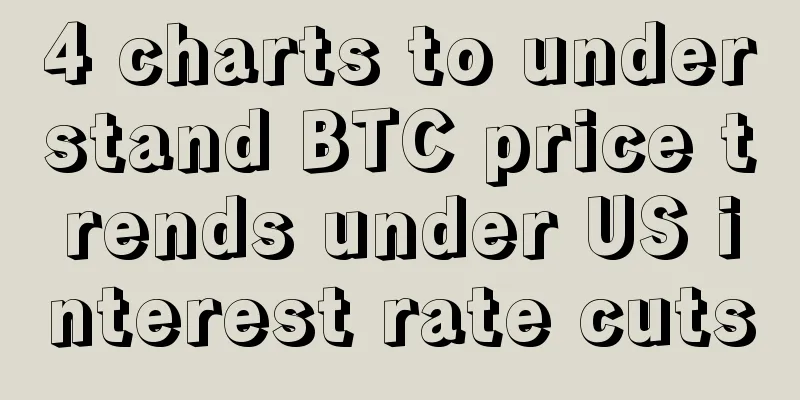4 charts to understand BTC price trends under US interest rate cuts

|
The BTC and Crypto asset markets are undoubtedly in a challenging environment right now, and seasonal changes in September have made the situation worse. In a recent report, Kaiko researchers explored how potential U.S. rate cuts and other key economic events could impact BTC . These four charts from analysts explain where BTC could head in the coming weeks . According to Be In Crypto, the third quarter has historically been challenging for BTC and the broader crypto asset market, with September often being the worst month for returns . Kaiko highlighted that BTC has fallen in September seven of the past 12 years. In 2024, this pattern has continued, with BTC falling 7.5% in August and 6.3% so far in September. As of now, BTC is trading 20% below its all-time high of nearly $73,500 set more than five months ago. However, according to Kaiko Research, the upcoming US interest rate cut may boost risk assets such as BTC. Bitget Wallet COO Alvin Kan holds the same view. "At a Jackson Hole microblogging conference, Fed Chairman Jerome Powell hinted that it might be time to adjust policy, sparking expectations of future rate cuts. The U.S. dollar index fell sharply in response and is currently fluctuating around 100." Kan said: “ With the September rate cut becoming a consensus expectation, the official start of the rate cut transaction is likely to improve the overall liquidity of the market , thus providing impetus for Crypto assets.” The report shows that September will be a highly volatile month, with BTC's 30-day historical volatility soaring to 70%. This indicator measures the volatility of asset prices over the past 30 days, reflecting the sharp fluctuations in asset prices during this period. BTC’s volatility is now almost double last year’s levels and is approaching peaks seen in March , when BTC hit an all-time high of over $73,000. Ethereum has also experienced significant volatility, exceeding March levels and BTC levels, driven primarily by Ethereum-specific events such as the liquidation of Jump Trading and the launch of an Ethereum ETF. Since early September, BTC’s implied volatility (IV) has increased after falling in late August. The IV indicator measures the market’s expectations for future price volatility based on current options trading activity. The higher the IV value, the greater the price fluctuations that traders expect in the future, but it does not indicate the direction of the fluctuations. Notably, the largest gains were seen on short-term option expirations , with the September 13 expiration date jumping from 52% to 61%, surpassing the end-of-month contracts. For ordinary people, when short-term implied volatility exceeds long-term volatility, it indicates increasing market pressure, which is called an "inverted structure." Risk managers often view inverted structures as a signal of increased uncertainty or market stress. Therefore, they may interpret this as a warning to reduce the risk of their portfolios by reducing exposure to volatile assets or hedging against potential downside risks . Kaiko researchers noted: "Market expectations are consistent with last week's US jobs report, which dampened market hopes for a 50 basis point rate cut. However, the upcoming US CPI data is still likely to influence market expectations." The BTC volume chart also highlights the current market volatility, showing increased trader participation. Cumulative trading volume is approaching a record $3 trillion, up nearly 20% in the first eight months of 2024 after reaching the previous peak in 2021. Traditionally, BTC investors view rate cuts as positive market catalysts. However, the market’s interpretation of a larger-than-expected rate cut remains a concern. 10X Research founder Markus Thielen warned that a 50 basis point rate cut could be seen as a signal of urgency, potentially triggering a pullback in risk assets such as BTC . “While a 50 basis point rate cut by the Fed could signal to markets deeper concerns, the Fed’s priority is to mitigate economic risks, not manage market reactions,” Thielen said in a note to clients. In addition to speculation about interest rate cuts, other factors causing volatility in the Crypto asset market include the upcoming US election. According to relevant reports, the debate between Trump and Harris is expected to trigger market volatility, especially for BTC and Ethereum. |
<<: Is the upcoming interest rate cut really good for the market?
>>: Symbiosis or separation? What is the relationship between Layer 2 and Ethereum?
Recommend
A complete explanation of the lifeline in palmistry. How to read the lifeline?
The lifeline is the line that runs from the botto...
Small blocks and Lightning Network, the daydream of the Bitcoin Core development team
In early 2015, Joseph Poon and Thaddeus Dryja pub...
What is a bad husband face? Can you believe it?
Do you know what a husband-killing face is? In fa...
Beijing Arbitration Commission: Bitcoin is protected by law but with one condition
Is Bitcoin protected by law in the country? Recen...
The “Blockchain Queen” has trouble raising funds
Blythe Masters, a former JPMorgan Chase executive...
What does a mole behind a man’s earlobe mean?
Although not everyone has a mole behind their ear...
【Filecoin Weekly Report-83】Venus v0.9.0 has been released and related nodes have been started
This article was originally written by IPFS Force...
A complete illustration of nose bridge physiognomy!
How to read face from nose? Nowadays, the plastic...
What does it mean when the mole grows?
In fact, although many things in physiognomy look...
Is it good for a woman to have a black mole on her neck? Is it good to have moles on both sides of the neck?
Different moles have different meanings. Some mol...
What's wrong with my right eye?
What causes right eye twitching? As the saying go...
How to read the fortune line in palmistry
There are many different lines in palmistry, each...
Inventory: What palm lines can bring great wealth and honor
I believe that becoming rich and powerful is what...
Alternative digital assets: Software vulnerabilities (Bug or Vulnerability)
Author: Xu Hejun We are in the Internet age, wher...
What is the fate of the hand? What is the influence of palmistry?
Palmistry is the characteristic of the lines on o...









